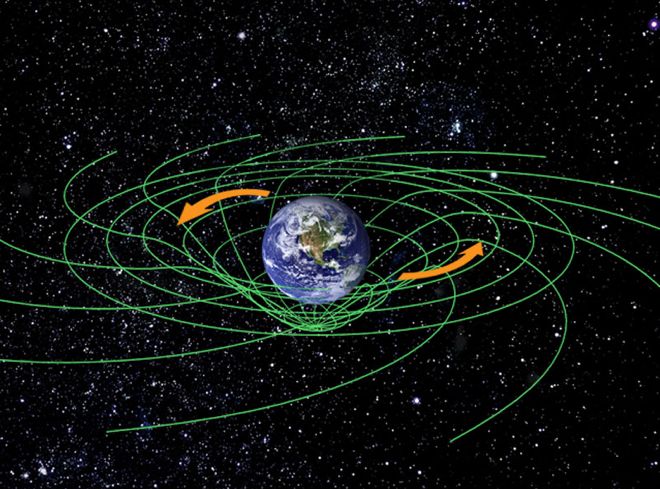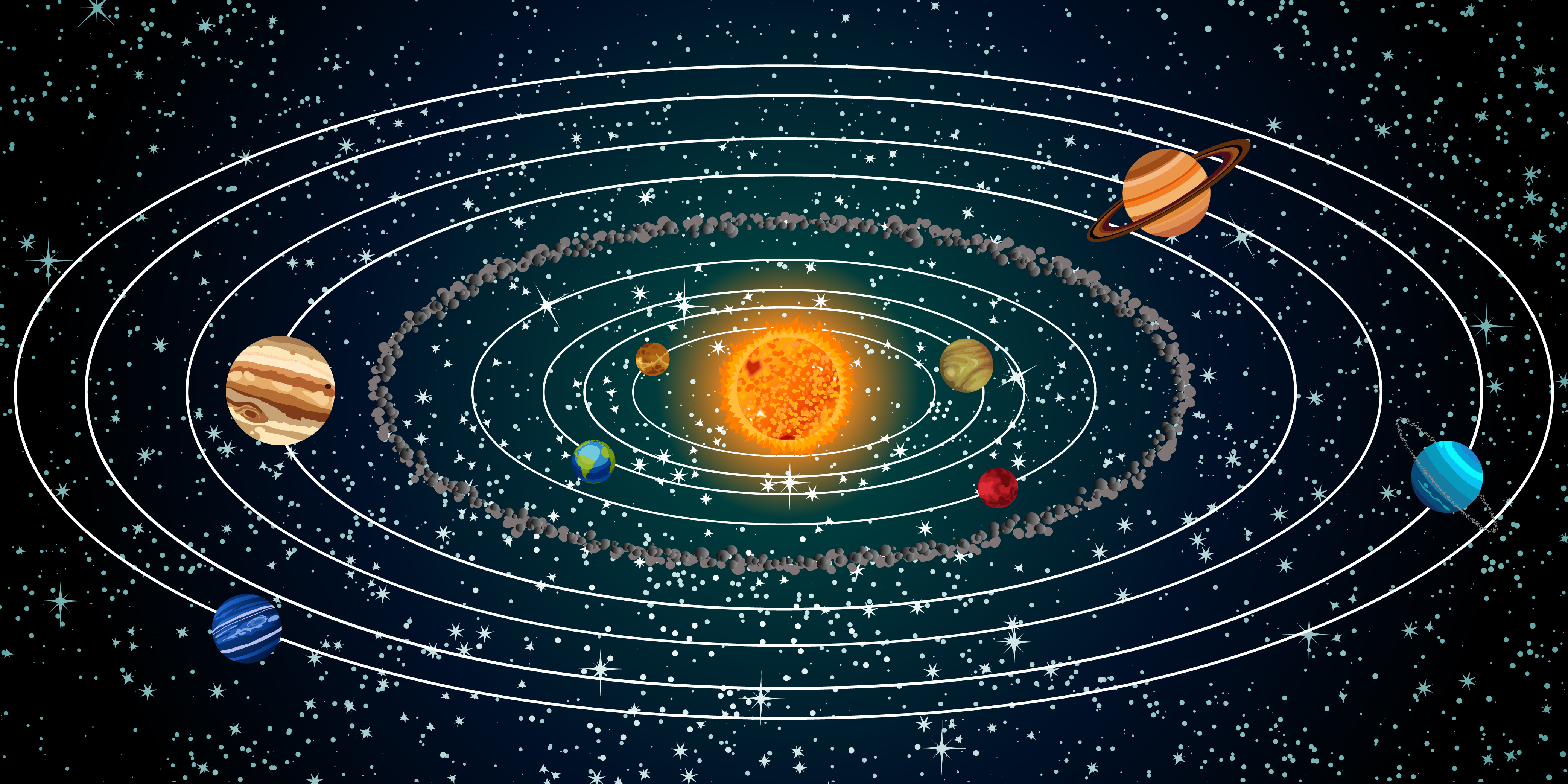"We have evidence that
this new view of gravity actually agrees with the observations, " says
Erik Verlinde, a Dutch theoretical physicist and string theorist. "At
large scales, it seems, gravity just doesn't behave the way Einstein's theory
predicts." The detection of gravitational waves (image above) scooped the
2017 Nobel physics prize.
But Verlinde proposes a
rather different theory --the theory of emergent gravity."Many theoretical
physicists like me are working on a revision of the theory, and some major
advancements have been made. We might be standing on the brink of a new
scientific revolution that will radically change our views on the very nature
of space, time and gravity."
One of those big open
questions that we have in physics goes like this. Einstein’s theory of General
Relativity is elegant and accurate. It makes many correct predictions,
including the prediction of gravitational waves, the observation of which won
the Nobel Prize in physics today. Yet if we use General Relativity to predict
the motion of galaxies, we get the wrong answer.
The favored response to this
is to invent a new form of so-called ‘dark’ matter. Adding the right amount of
this to the visible matter in the galaxies brings theory and observation into
agreement. But this is not just a minor correction – there needs to be much
more of the dark matter around than normal matter.
What is more, dark matter
doesn’t seem to be made up of quarks and electrons like all other matter. In
fact it doesn’t seem to be made up of any of the particles in the Standard
Model of particle physics.
So that’s the big question.
To answer it, theorists postulate new extensions to the Standard Model,
containing new particles, from which dark matter might be made. We are actively
searching for such things, at the Large Hadron Collider at CERN and using
sensitive underground detectors.
But there may be another
way. Perhaps General Relativity can be modified instead, to give a new theory,
in which the motions of galaxies, and the structure of the universe, are correctly
predicted, without the need for dark matter. Maybe even the accelerating
expansion of the universe, another current conundrum of physics, can be
explained in such a theory.
Perhaps dark matter is a
mythical beast, a figment of our ignorance which will evaporate as we explore
nature more thoroughly.
Gravity is in dire need of
new approaches like the one by Verlinde, since it doesn't combine well with
quantum physics. Both theories, crown jewels of 20th century physics, cannot be
true at the same time. The problems arise in extreme conditions: near black
holes, or during the Big Bang.
A new theory of gravity
might explain the curious motions of stars in galaxies. Emergent gravity, as
the new theory is called, predicts the exact same deviation of motions that is
usually explained by invoking dark matter.
Prof. Erik Verlinde,
renowned expert in string theory at the University of Amsterdam and the Delta
Institute for Theoretical Physics, published a new research paper today in
which he expands his groundbreaking views on the nature of gravity.
In 2010, Erik Verlinde
surprised the world with a completely new theory of gravity. According to Verlinde,
gravity is not a fundamental force of nature, but an emergent phenomenon. In
the same way that temperature arises from the movement of microscopic
particles, gravity emerges from the changes of fundamental bits of information,
stored in the very structure of spacetime.
In his 2010 article (On the
origin of gravity and the laws of Newton), Verlinde showed how Newton's famous
second law, which describes how apples fall from trees and satellites stay in
orbit, can be derived from these underlying microscopic building blocks.
Extending his previous work
and work done by others, Verlinde now shows how to understand the curious
behaviour of stars in galaxies without adding the puzzling dark matter.
The outer regions of
galaxies, like our own Milky Way, rotate much faster around the centre than can
be accounted for by the quantity of ordinary matter like stars, planets and
interstellar gasses.
Something else has to
produce the required amount of gravitational force, so physicists proposed the
existence of dark matter. Dark matter seems to dominate our universe,
comprising more than 80 percent of all matter. Hitherto, the alleged dark
matter particles have never been observed, despite many efforts to detect them.
According to Erik Verlinde,
there is no need to add a mysterious dark matter particle to the theory. In a
new paper, Verlinde shows how his theory of gravity accurately predicts the
velocities by which the stars rotate around the center of the Milky Way, as
well as the motion of stars inside other galaxies.
At first glance, Verlinde's
theory presents features similar to modified theories of gravity like MOND
(Modified Newtonian Dynamics). However, where MOND tunes the theory to match
the observations, Verlinde's theory starts from first principles. "A
totally different starting point," according to Verlinde.
One of the ingredients in
Verlinde's theory is an adaptation of the holographic principle, introduced by
his tutor Gerard 't Hooft (Nobel Prize 1999, Utrecht University) and Leonard
Susskind (Stanford University).
According to the holographic
principle, all the information in the entire universe can be described on a
giant imaginary sphere around it. Verlinde now shows that this idea is not quite
correct—part of the information in our universe is contained in space itself.
This extra information is
required to describe that other dark component of the universe: Dark energy,
which is believed to be responsible for the accelerated expansion of the
universe.
Investigating the effects of
this additional information on ordinary matter, Verlinde comes to a stunning
conclusion. Whereas ordinary gravity can be encoded using the information on
the imaginary sphere around the universe, as he showed in his 2010 work, the
result of the additional information in the bulk of space is a force that
nicely matches that attributed to dark matter.
On the brink of a scientific
revolution: Gravity is in dire need of new approaches like the one by Verlinde,
since it doesn't combine well with quantum physics. Both theories, crown jewels
of 20th century physics, cannot be true at the same time. The problems arise in
extreme conditions: near black holes, or during the Big Bang.
More information: Emergent
Gravity and the Dark Universe, E. P. Verlinde, 7 Nov 2016.
arxiv.org/abs/1611.02269
Via DailyGalaxy


